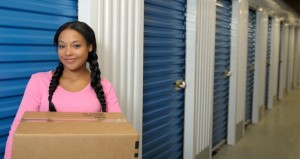Business
How to Save Money While Avoiding a Public Storage Nightmare
 One of the greatest stresses we face in common events is moving. Finding that new home or apartment is headache enough, but then comes packing, hiring movers, and finding a storage unit to house those things that will be added to the home later, or that wont fit into the home. Storage bills add up, and there are several ways you can save money when using them. For starters, visit a site like usstoragesearch.com where you can compare costs and amenities. But there are other ways in which you can cut down on those storage costs, and this article will explore some of these good practices.
One of the greatest stresses we face in common events is moving. Finding that new home or apartment is headache enough, but then comes packing, hiring movers, and finding a storage unit to house those things that will be added to the home later, or that wont fit into the home. Storage bills add up, and there are several ways you can save money when using them. For starters, visit a site like usstoragesearch.com where you can compare costs and amenities. But there are other ways in which you can cut down on those storage costs, and this article will explore some of these good practices.
Size Matters
In other words, the more stuff you have, the bigger the unit space you need (and you pay more for it too). All too often, people will simply throw unsorted boxes and bags of random stuff into a storage unit because they claim to be too busy to sort items, or too stressed with having to take on another project in the big move. But remember, spending an extra $40 a month on a larger unit adds up to an extra $480 a year that you could have kept. Let’s say it takes you 5 hours to sort your items. Is 5 hours of your time worth nearly $500? Here are some tips to help:
- Make a pile of all the things you don’t need. Place this pile in a large, clean area so you can clearly see everything and organize it for keeping, for sale, or for charitable donations. Some of these items may be things you have outgrown, or simply no longer use. Clear out all your drawers, and remove clutter from places like closets and from under the bed. Once you have all of these items in a pile, make three separate piles: (1) things you use almost every day such as shoes, tools, and phone accessories. (2) The second pile should be composed of things you use once or twice a month, such as items that are commonly found in the garage or décor items used for special occasions. (3) The third pile should consist of things you use at least once every 6 months to a year (that “just for heck of it sweater”). Get rid of these things! As for the items in pile number 2, select what you can afford to get rid of, and what you can’t live without. This doesn’t seem like much, but by following these steps you will be amazed at how mush stuff you get rid of, and how much easier your move will be, as well as your monthly storage bill.
- Avoid storing perishable items without climate control. No, I am not referring to a box of fruit that fell off the Dole truck. I am talking about sensitive materials. For example, certain manuscripts printed on old paper need to be stored in a climate-controlled unit. If you have a 16th century print by Albrecht Durer, you certainly don’t want to keep it in a storage unit that lacks climate control. You may save some money on the rental fee, but when that $300,000 print fades over time and is worth as much as a gum wrapper, you will wish you could turn back time and opt for the climate controlled facility. Also, if your storage unit is by the ocean, it is better to get an climate controlled unit to protect the integrity of your antique furniture and books. Sea air is notorious for causing things to mold and grow mildew.
Some Final Thoughts
By following these tips, you can save money and gain peace of mind. In fact, according to the BBB, they advise consumers to consider THE SAME points as mentioned above. Take some extra time in configuring your items for storage, and it will all pay off in the end.
Image source: http://www.securitypublicstorage.com/sites/default/files/SPS-OCEANSIDE-CROP-12.jpg
-

 Tech11 years ago
Tech11 years agoCreating An e-Commerce Website
-

 Tech11 years ago
Tech11 years agoDesign Template Guidelines For Mobile Apps
-

 Business6 years ago
Business6 years agoWhat Is AdsSupply? A Comprehensive Review
-

 Business10 years ago
Business10 years agoThe Key Types Of Brochure Printing Services
-

 Tech8 years ago
Tech8 years agoWhen To Send Your Bulk Messages?
-

 Tech5 years ago
Tech5 years ago5 Link Building Strategies You Can Apply For Local SEO
-

 Law5 years ago
Law5 years agoHow Can A Divorce Lawyer Help You Get Through Divorce?
-

 Home Improvement6 years ago
Home Improvement6 years agoHоw tо Kеер Antѕ Out оf Yоur Kitсhеn































